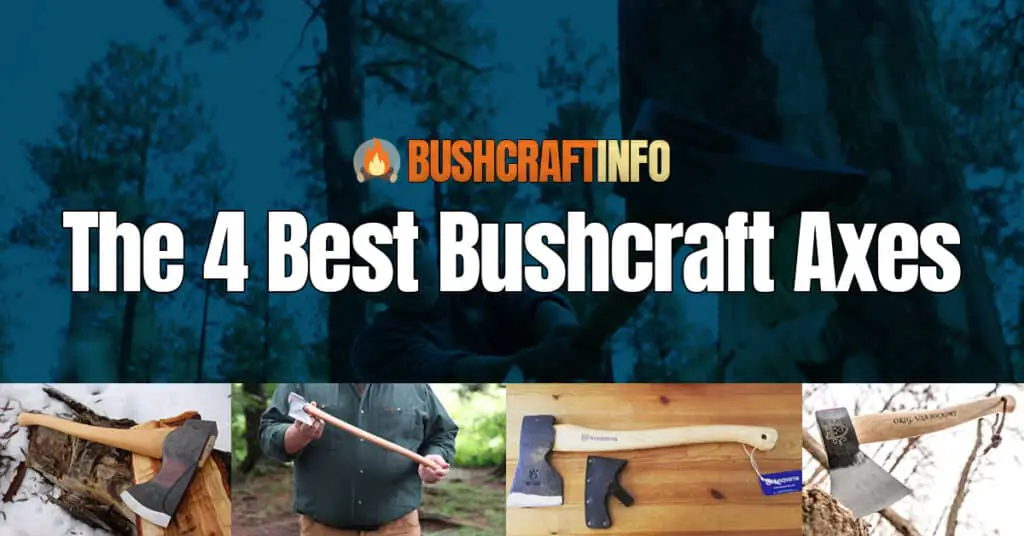If you are new to knives, then, you must want to know what is the best grind for a bushcraft knife.
Choosing the best grind for a bushcraft knife depends on the overall applications of the knife. If you are using your knife for carving, slicing, or skinning a lot, then, you should go for a scandi grind. However, for tougher jobs, the flat grind is a perfect choice.
As mentioned earlier, the grind of the knife really depends on what you will be using your knife for. I’m aware that most individuals use their knives for chopping, cutting, carving, and skinning outside.
However, you must learn the pros and cons of each type of knife grind before choosing the right one for your needs. Luckily, I have got you completely covered with this fully researched article.
In this article, you will not only learn about the best grind for a bushcraft knife. But, I will also tell you some pros and cons of each type of grind. So let’s get into it!
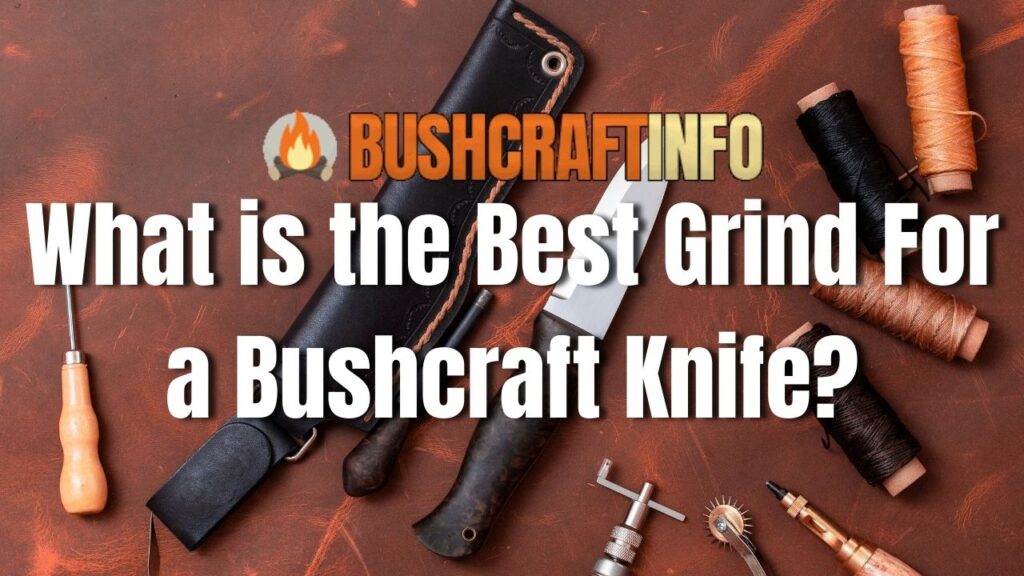
What Are the Main Types of Bushcraft Knife Grinds?
There are many types of grinds and each one has a specific purpose. Let’s take a look at each grind first and see its pros and cons. This will help you understand what you need to choose for your bushcraft knife.
1. The Scandi Grind
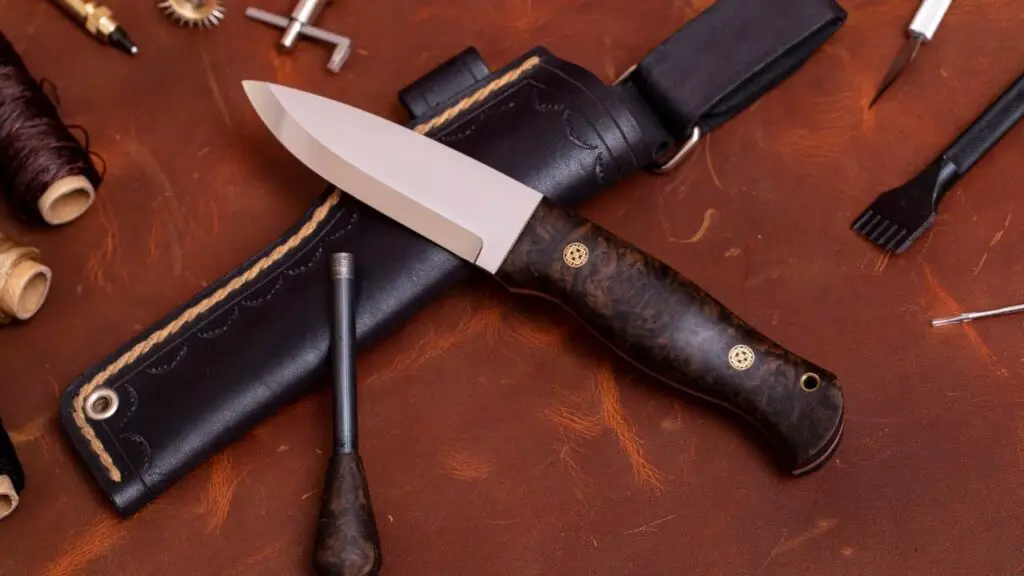
The Scandi grind is the most popular knife grind for bushcraft knives. It has a single bevel that starts from the blade edge and curves up to the spine. This type of grind is perfect for slicing and carving because it gives you a lot of control over the blade.
The Scandi grind is also very durable and can withstand a lot of abuse. However, it’s not the best grind for heavy-duty tasks.
2. The Flat Grind

The flat grind is the most popular type of knife grind because it offers both strength and durability. It has a single bevel that is ground from the blade spine to the edge. This type of grind is great for chopping, cutting, and carving.
The flat grind is also very easy to sharpen and does not require a lot of maintenance. However, it’s not the best grind for slicing and carving.
3. The Hollow Grind

The hollow grind is a type of knife grind that has two bevels. The first bevel is ground from the blade spine to the edge and the second bevel is ground from the edge to the point. This type of grind is great for slicing and carving because it gives you a lot of control over the blade.
The hollow grind is also very sharp and can easily penetrate hard materials. However, it’s not the best grind for heavy-duty tasks.
4. The Chisel Grind
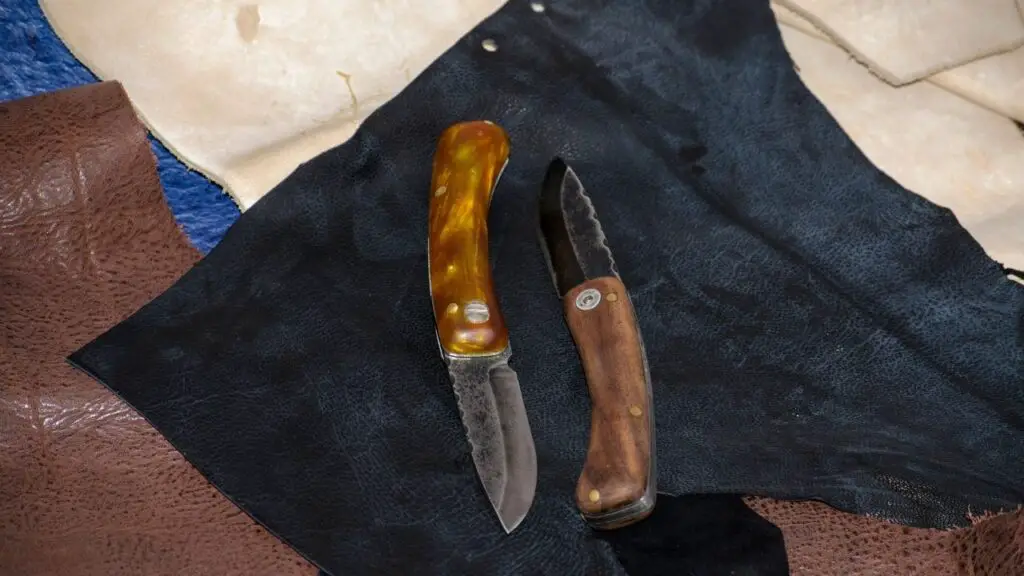
The chisel grind is a knife grind that has a single bevel that is ground at a 60-degree angle. This type of grind is perfect for slicing and carving because it offers a lot of control and precision.
The chisel grind is also very durable and can withstand a lot of abuse. However, it’s not the best grind for heavy-duty tasks.
5. The Convex Grind
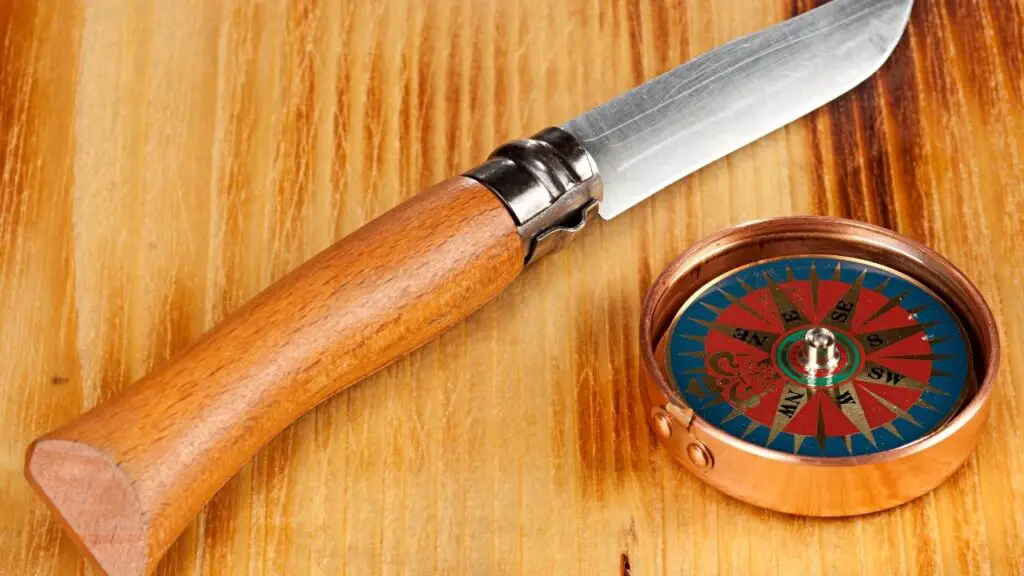
The convex grind is a knife grind that has a single bevel that curves outwards. This type of grind offers the most durability and strength. It’s perfect for chopping, cutting, and carving.
The convex grind is also very easy to sharpen and does not require a lot of maintenance. However, it’s not the best grind for slicing and carving.
Now that you know about each type of knife grind, it’s time to choose the right one for your needs.
6. The Saber Grind
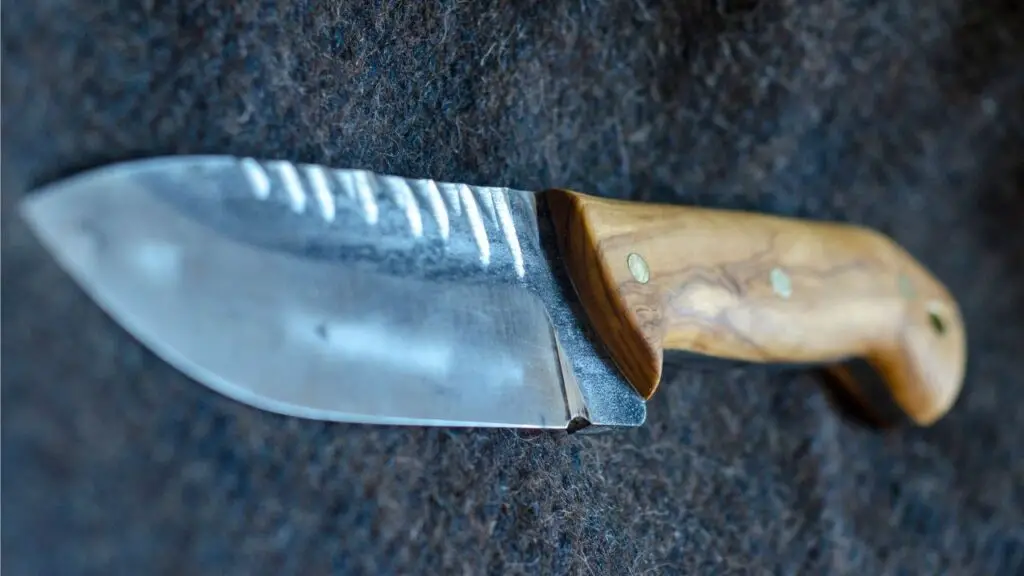
Saber Grind is not a common knife grind, but it is perfect for bushcraft knives. It has a single bevel that is ground at a 45-degree angle. This type of grind is perfect for chopping, cutting, and carving.
The Saber Grind is also very durable and can withstand a lot of abuse. It is mainly used for survival situations because of the tough nature of the grind.
Now you’ve learned about different types of grinds and their pros and cons. Let’s take a look at some qualities that you need to see before choosing the best grind for a bushcraft knife.
Choosing The Best Grind for Bushcraft
Here are some properties that you need to look for while choosing the right type of grind for your knives.
1. Cutting Efficiency
The most important factor while choosing the best grind for a bushcraft knife is the cutting efficiency of the knife. You need to choose a grind that can easily slice through hard materials.
Besides that, the knife should be able to cut through not only food items, such as meat and veggies, but it should also be able to cut through objects like wood, bones, and other tough materials.
2. Strength and Durability
The knife should be able to withstand a lot of abuse and should have a high degree of durability. You don’t want the blade to break or chip while performing heavy-duty tasks.
Especially during your time in the wilderness, you will be dependent on your knife for so many things. If your blade gave up on you, then, things will not go very well for you.
3. Edge Retention
Edge retention means the ability of a blade to stay sharp no matter how much you use it. It is a very important property for bushcraft knives. As mentioned earlier, knives are one of the essentials for every bushcrafter and you may not have time to sharpen your blade while outside.
Therefore, your blade must be able to stay in perfect condition no matter how much you use it. An example of a comparison between edge retention of the types of blades, a Scandi grind is not able to retain the edge as much as a convex grind.
4. Easy to Sharpen
Another thing that you must consider is how easy the blade is to sharpen. A good bushcraft knife should be extremely easy to sharpen without using any machinery etc.
If we take a look at different knife grinds, the scandi grind is the easiest to sharpen due to the bevels. You can use a sharpening stone to make the blade razor-sharp in no time. However, the convex grind on the other hand is very difficult due to its curved shape.
Is A Flat Grind Good For Bushcraft?
A flat grind is not considered good for bushcraft because the knife becomes too thin and is not able to withstand a lot of abuse. It is also not as efficient as other grinds when it comes to slicing through hard materials.
If you still want to choose the flat grind, then, you should use your knife only for limited activities, such as peeling, cutting food and veggies, etc. For advanced tasks, such as hunting, skinning, slaughtering, this type of grind is not very promising.
Is Convex Grind Good For Bushcraft?
Due to the durability, edge retention, and sharpness, the convex grind is good for bushcraft. However, the main disadvantage of this type of grind is that you can’t sharpen it easily.
The convex grind has a curved shape which gets so much harder when sharpening with a wet stone. However, you can use a belt grinder to get the desired sharpness.
So, it all comes down to whether you are willing to go through the extra trouble of sharpening your blade.
Why is a Chisel Grind Bad for Bushcraft?
A chisel grind has a sharp edge, but still, it is not a good option for bushcraft. Why? It’s because the chisel grind requires consistent maintenance which can make things very hard during bushcraft situations.
It is ideal for woodworking but not for the wilderness because you have to do so many things other than clearing bushes and collecting wood for the fire in the wilderness.
Why Are Bushcraft Knives mostly Scandi Grind?
You may have noticed that most of the bushcraft knives are usually scandi grind. You might be thinking, why is it so? why are they all scandi grind?
The scandi grind is the most popular because it allows for a very thin edge without changing the angle. This allows the knife to make excellent incisions with the least amount of resistance possible.
As the angle changes, the amount of resistance for the blade increases. As a result, it requires more effort to produce cuts and work with the knife. Besides that, scandi knives are also very easy to sharpen with a simple sharpening stone. You can easily do it at home without any issue at all.
Last Minute Thoughts
Now that you know what to look for, it’s time to choose the right knife grind for your needs. The most important factor is the cutting efficiency of the knife while performing different tasks.
If you’re looking for a knife that can easily slice through hard materials then you should go with a chisel grind or convex grind. But, if you’re looking for a knife that is easy to sharpen, then, you should go with a scandi grind.
However, the saber grind is perfect for bushcraft knives as it offers great strength and durability. So, it all comes down to your specific needs and what you’re looking for in a bushcraft knife.
Was this post helpful?

Hey I’m Josh! I have been practicing Bushcraft for a little over 6 years now! I Started this website to review awesome bushcraft gear that I love as well as share information I have learned along the way!


